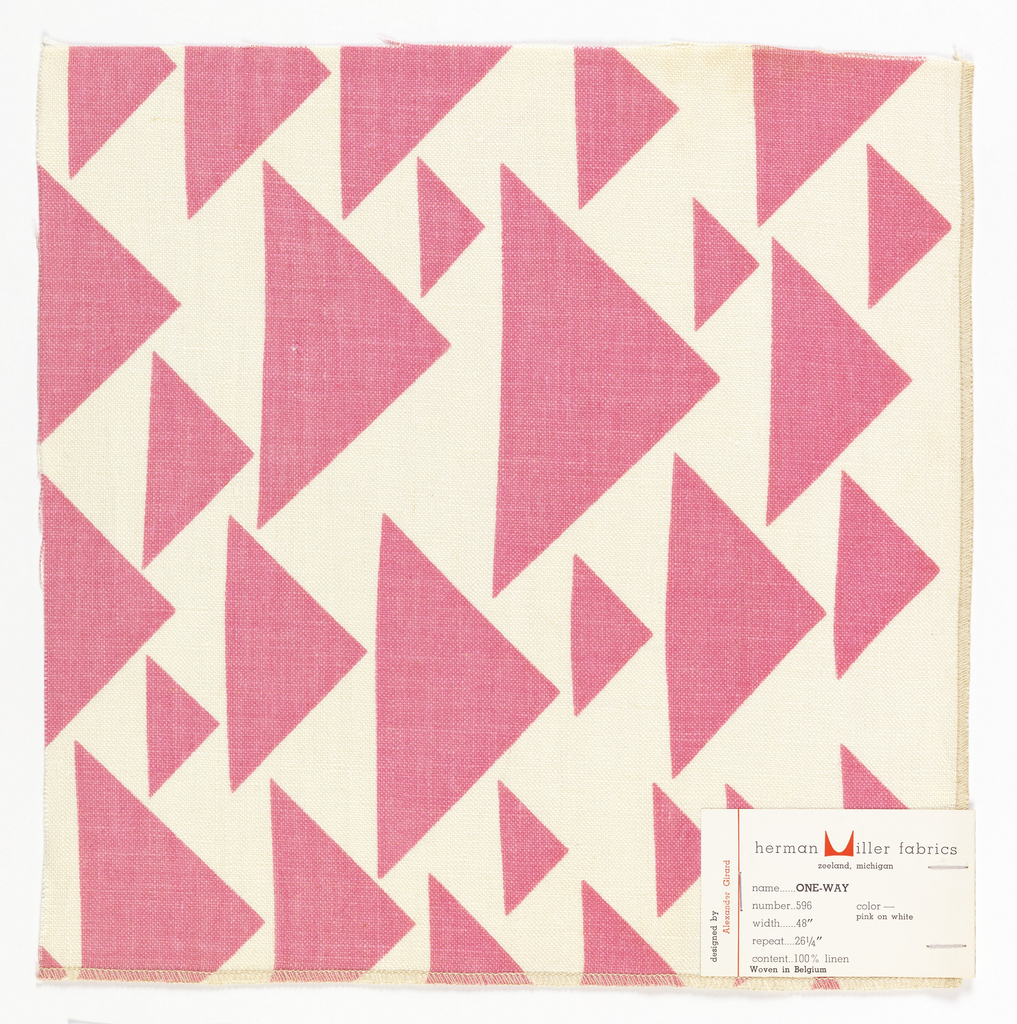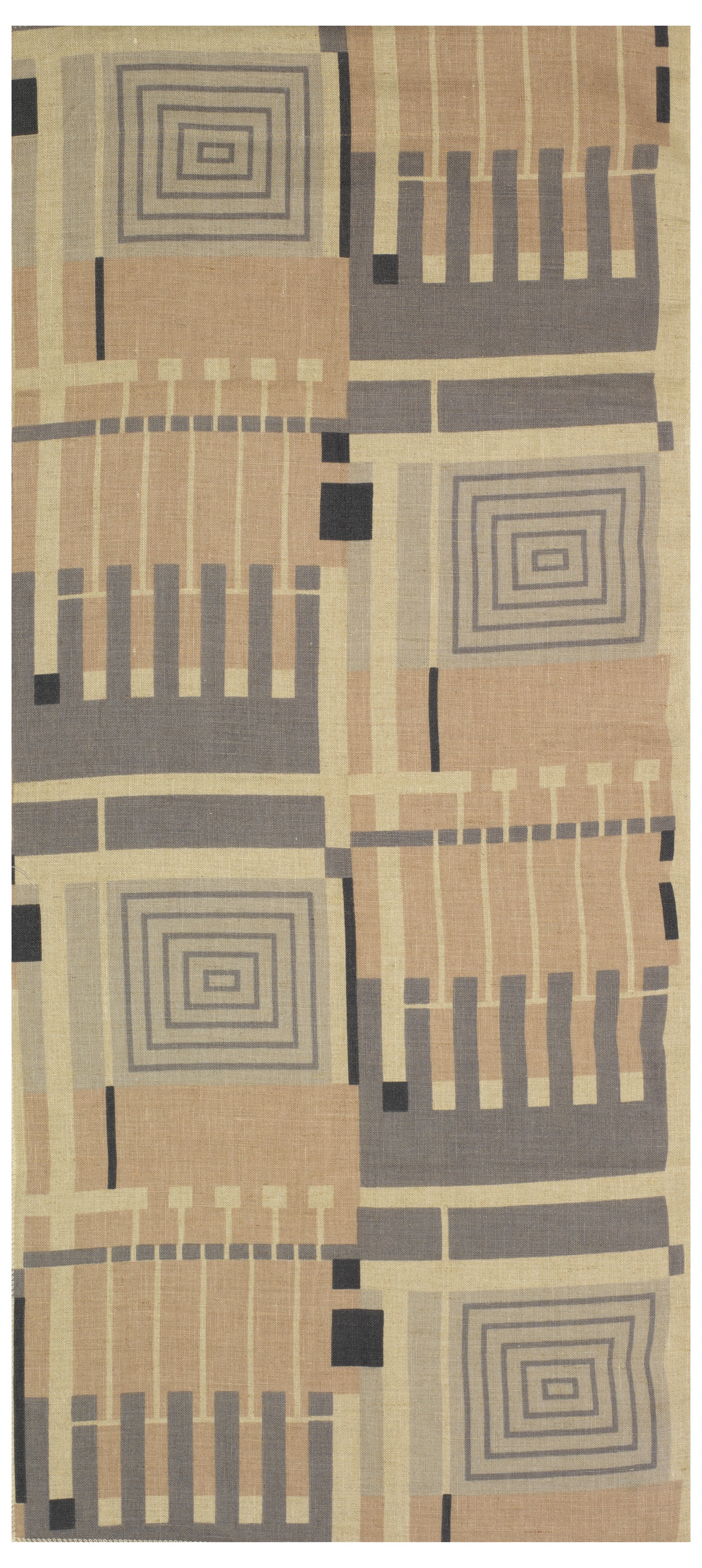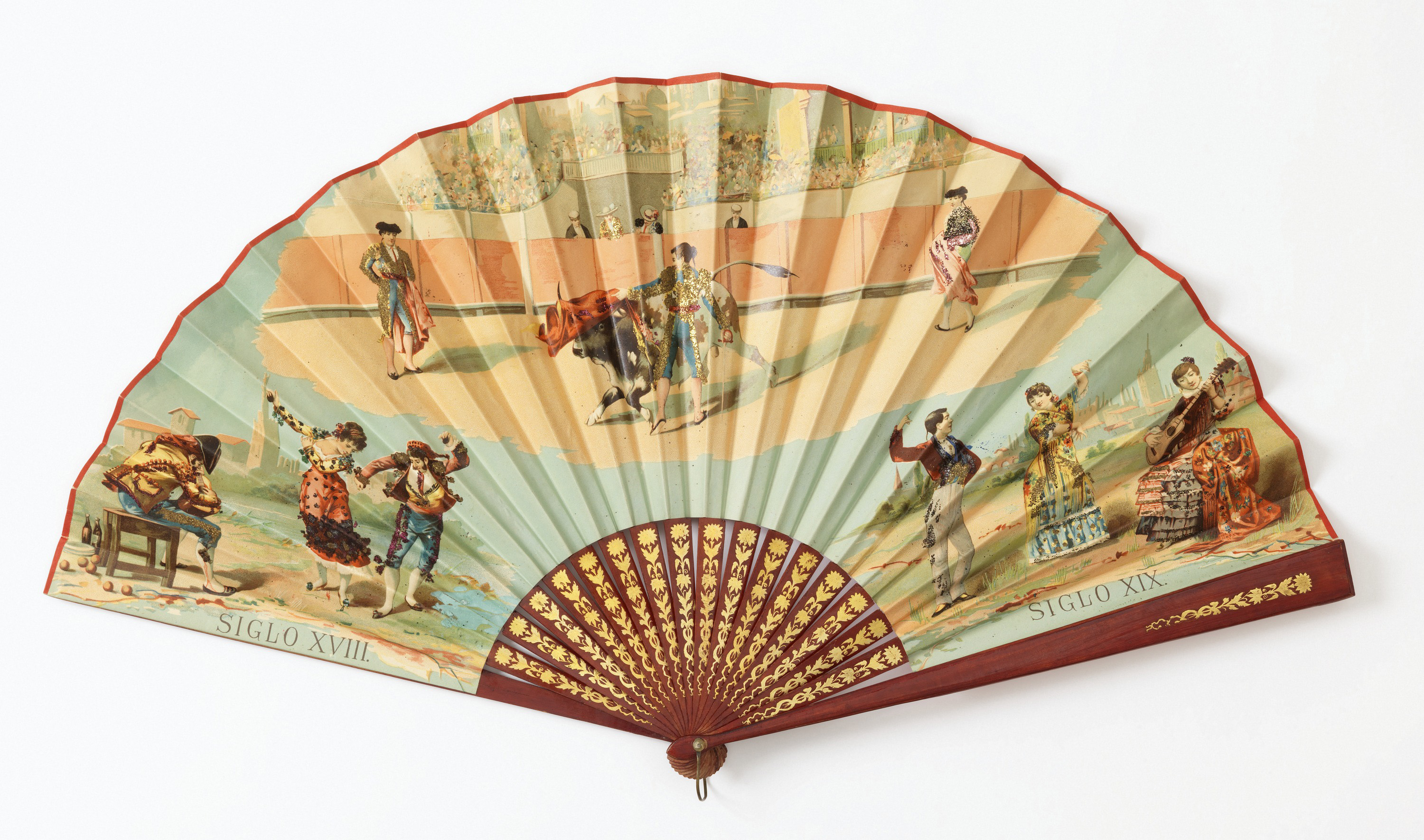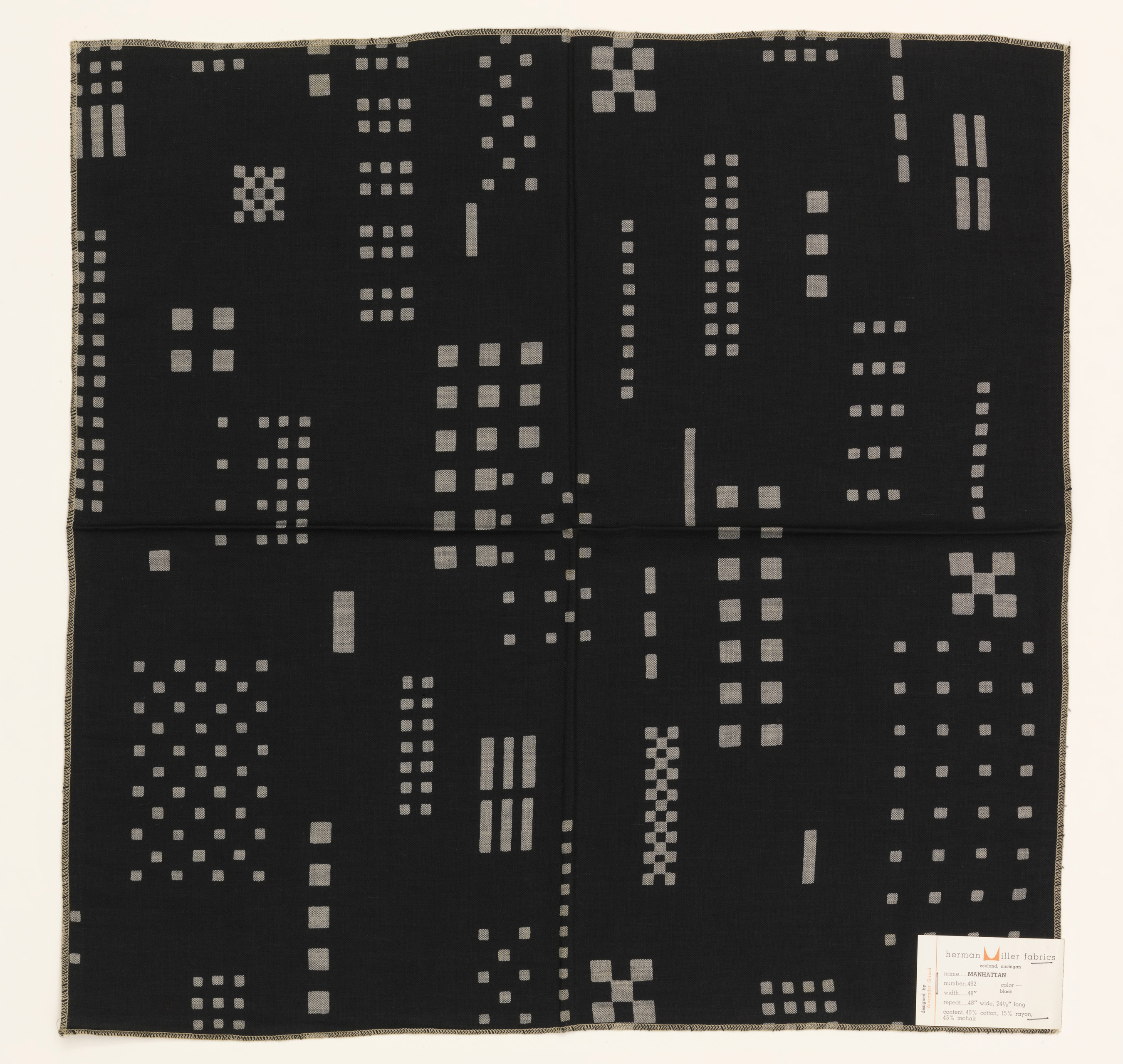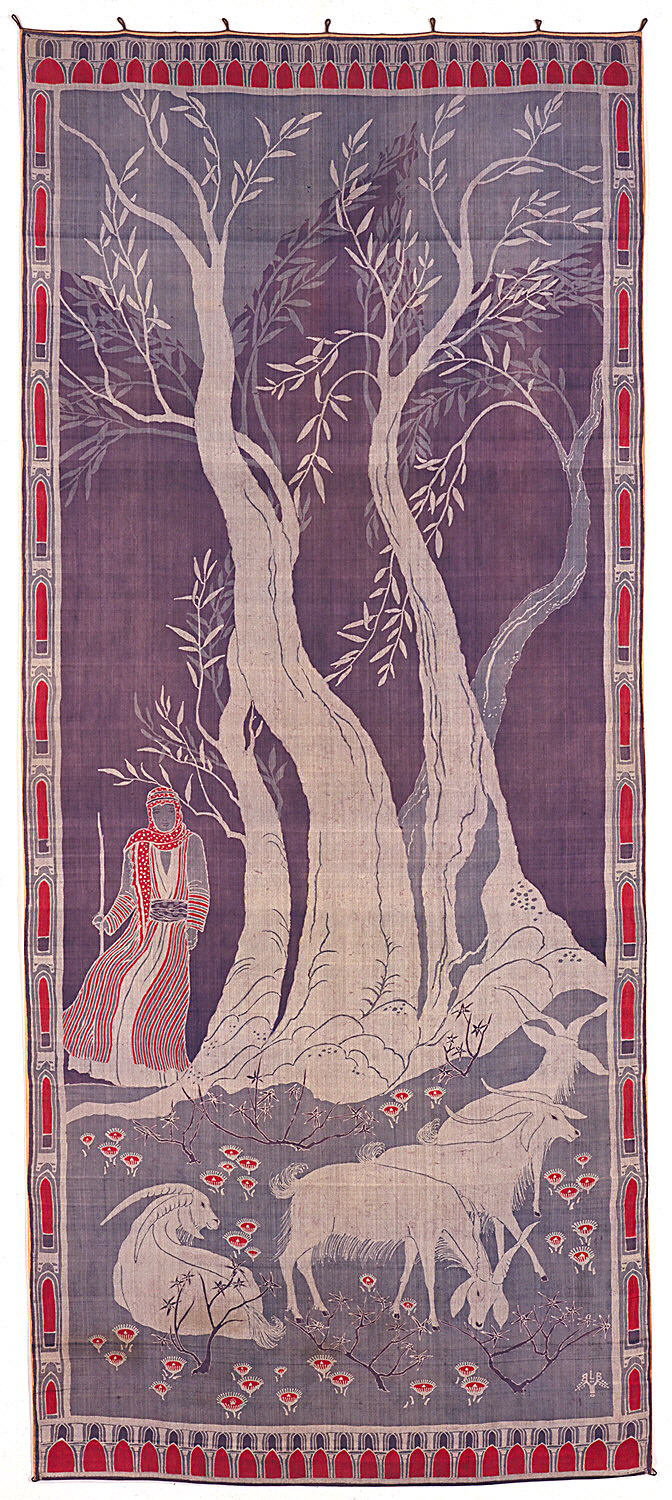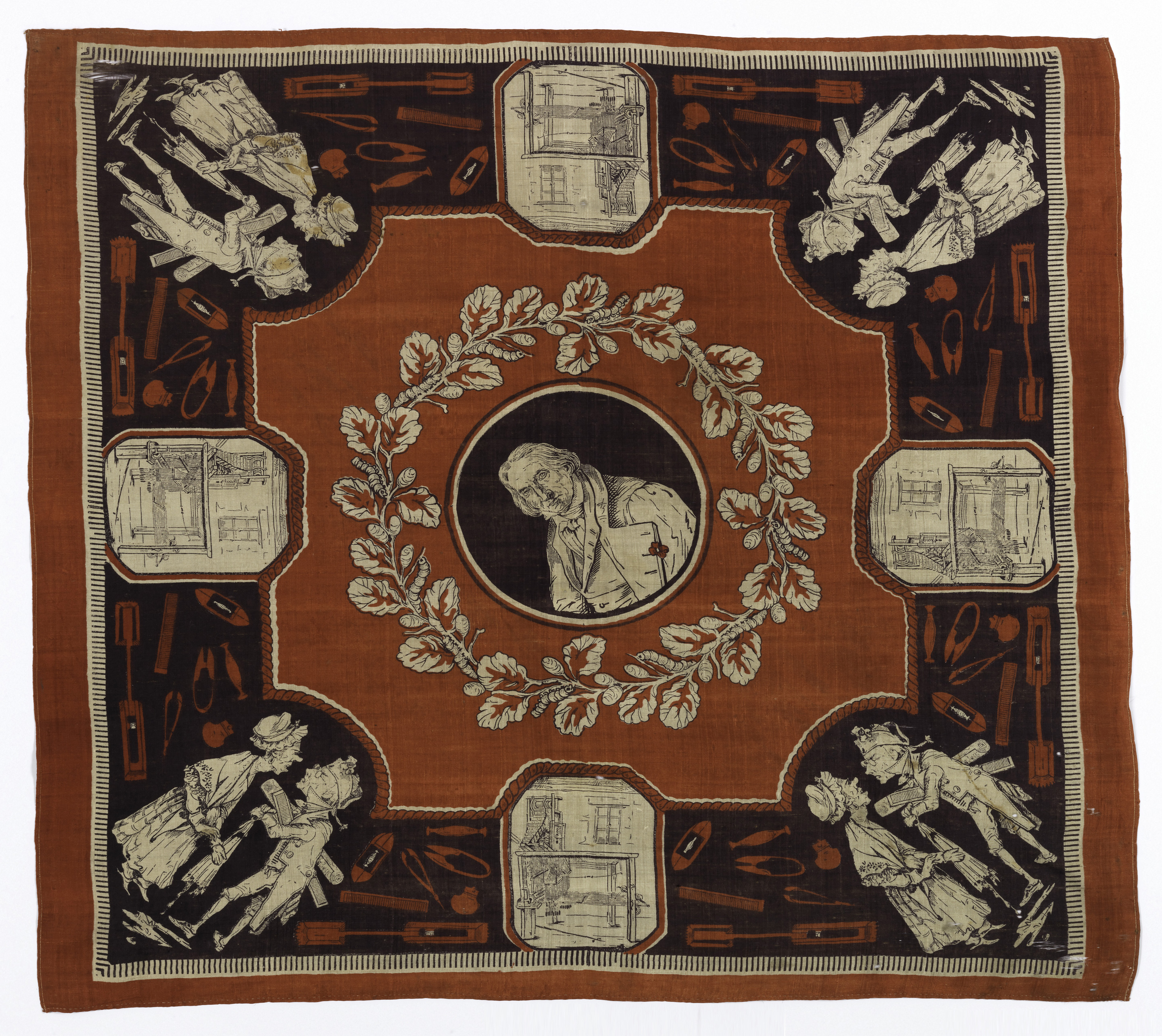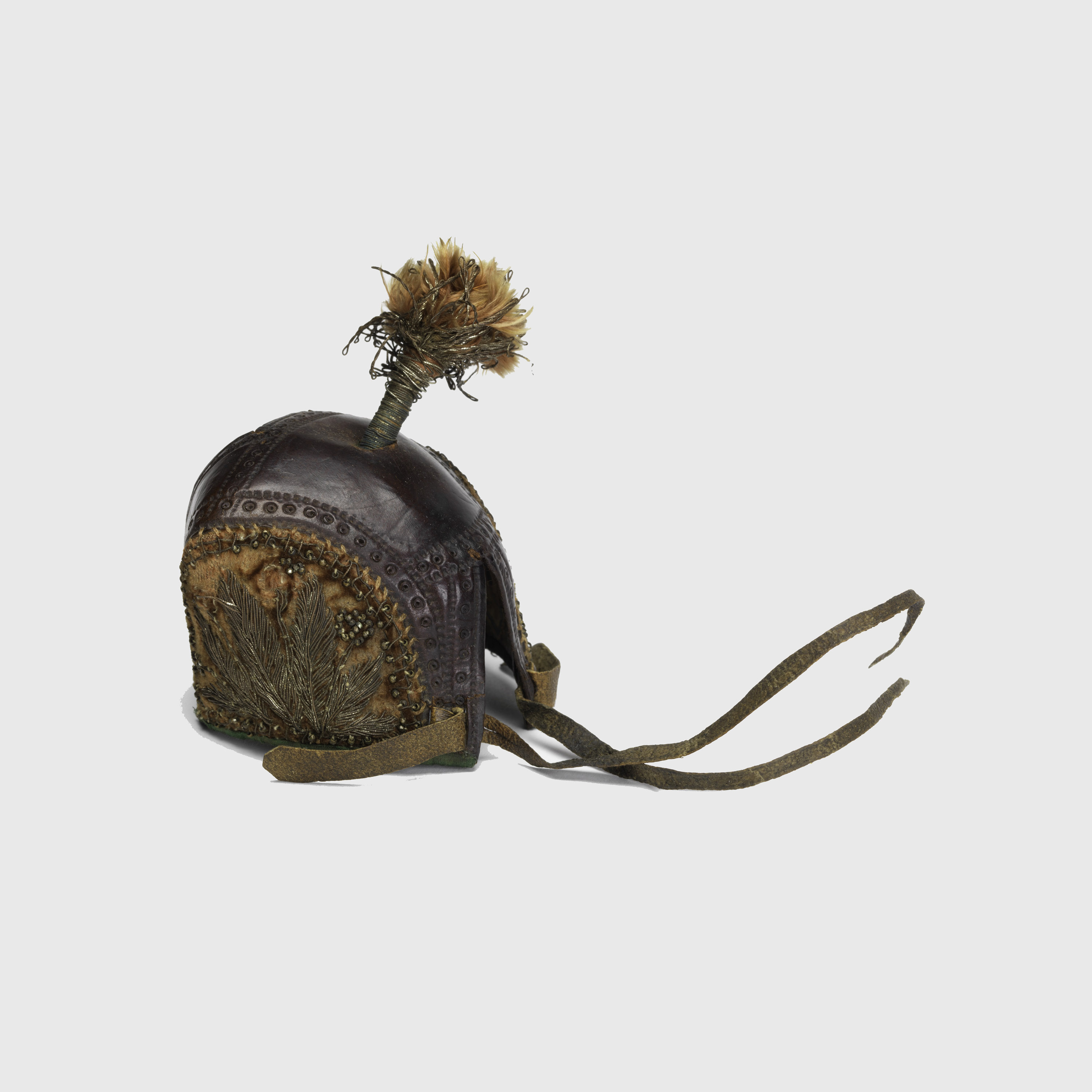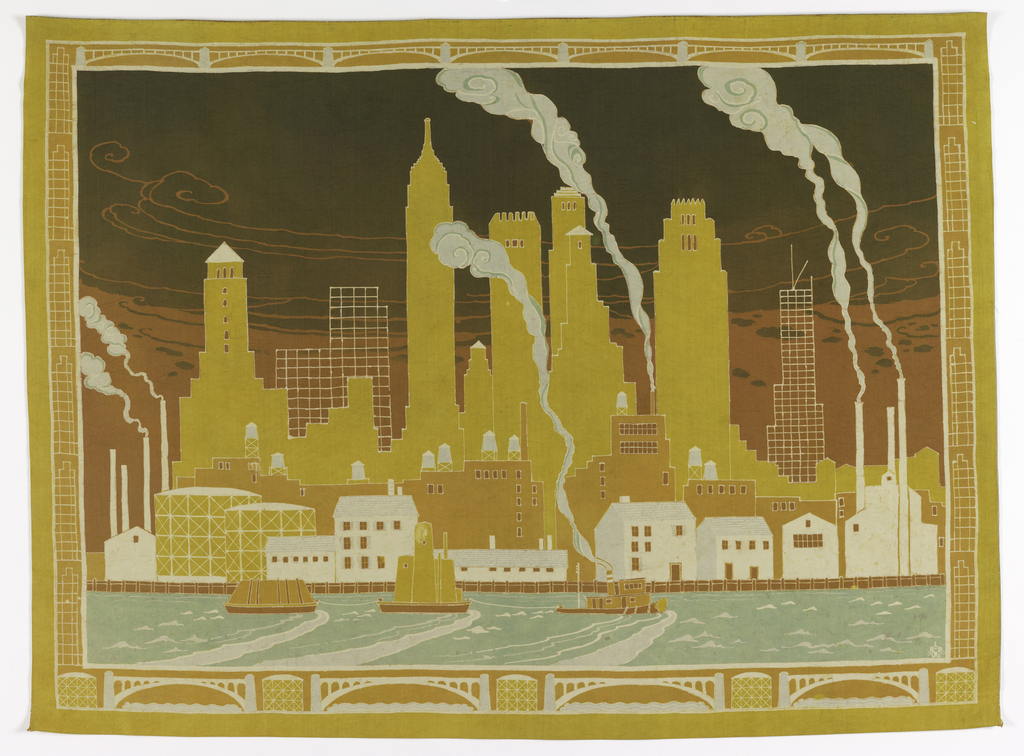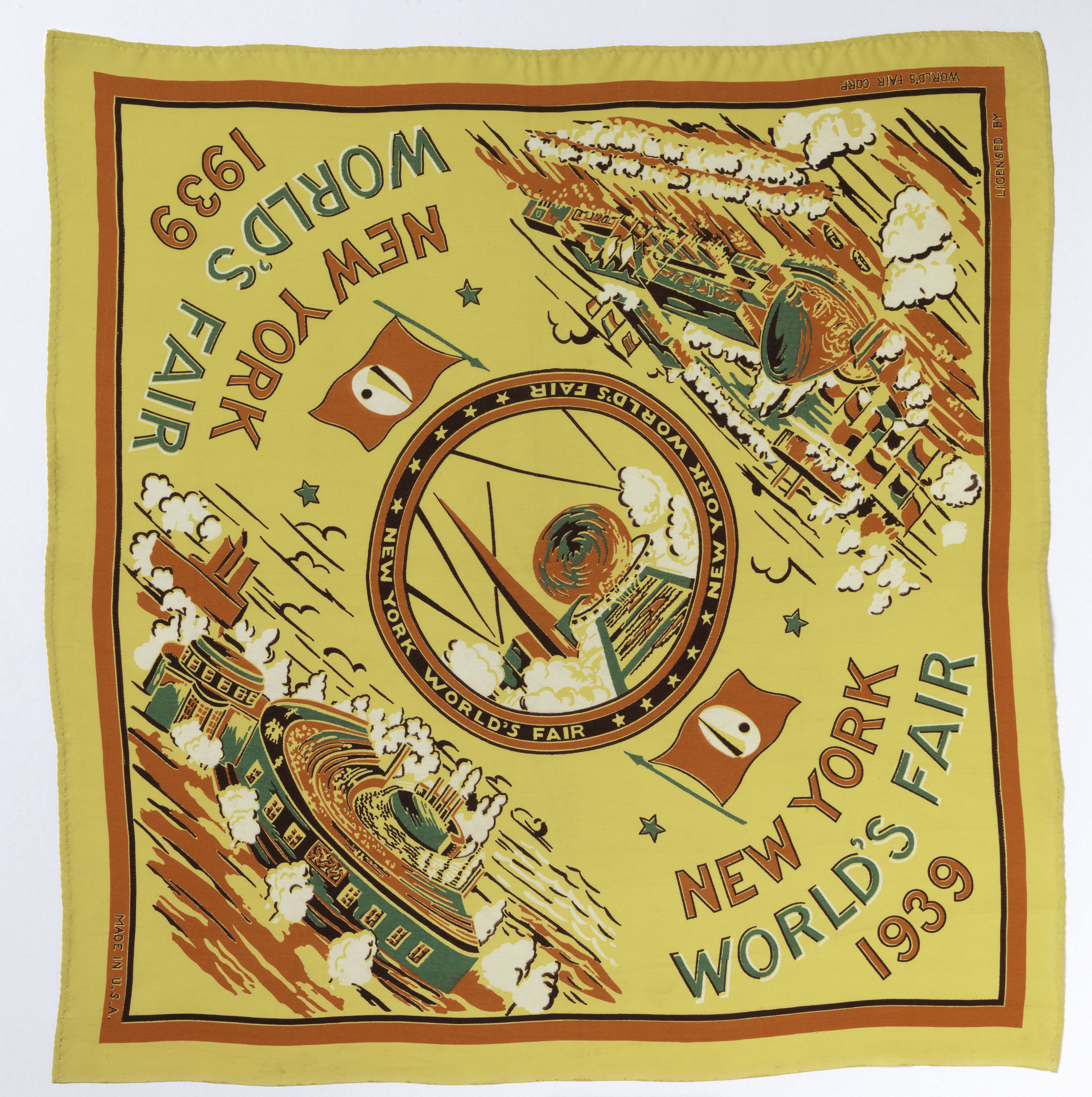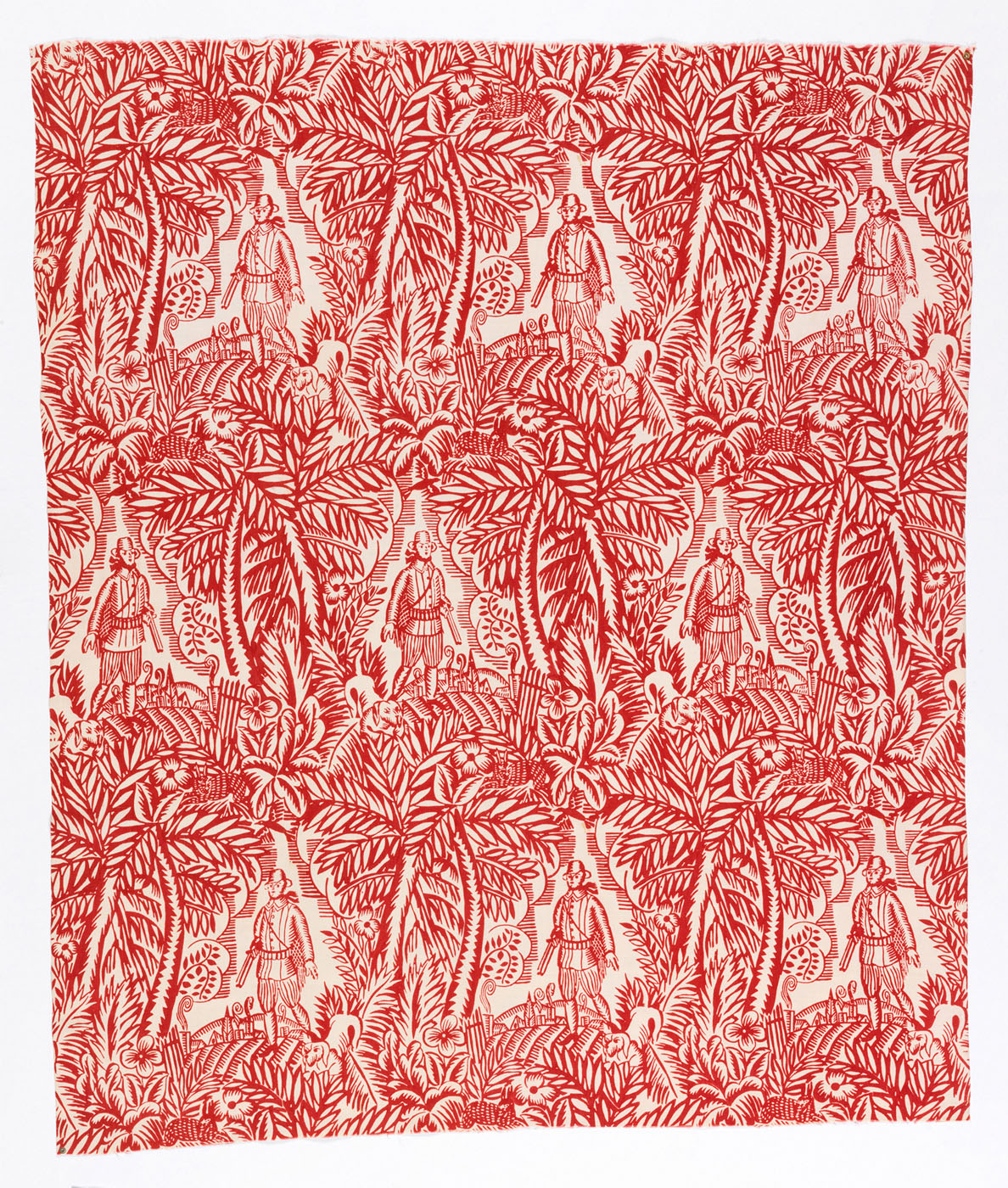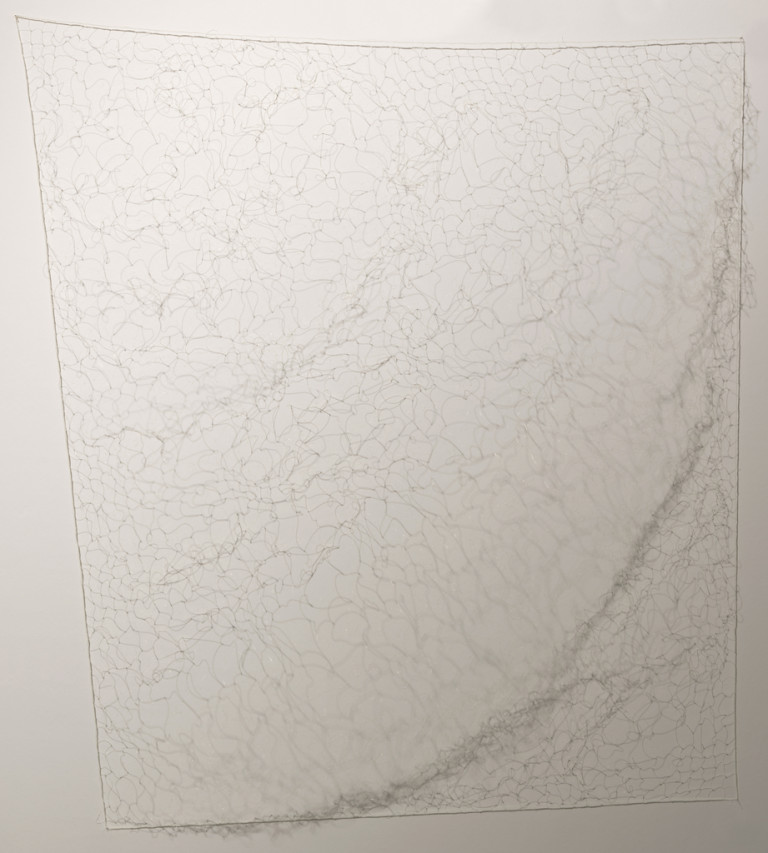Alexander Girard was a prolific textile designer, producing over three hundred textile designs during his near thirty-year tenure at Herman Miller, an important American furniture company and promoter of modern design. He was also an ardent collector, amassing a collection of cross-cultural folk art that ranks among the largest in the world. At Herman Miller,...
Although most of his home furnishings were designed for specific interiors, Frank Lloyd Wright created several lines of products for the market, among them the Taliesin Line of wall coverings and textiles, produced in partnership with F. Schumacher and Company. The collection included wallpaper, woven fabric, and printed fabric such as this, and many of...
Folding fans, or abanicos, were considered must-have accessories in nineteenth century Spain. For women, they served as important tools in courtship, the ‘language of the fan’ expressing everything from ‘come hither’ to ‘don’t bother’ to hopeful admirers. The imagery painted or printed on fans also carried important messages. Many celebrate national events, such as the...
Alexander Girard produced over 300 textile designs during his almost 30-year tenure at Herman Miller, an important American furniture company and promoter of modern design. That Girard was trained as an architect should come as no surprise—like many architects of his generation, he had experienced firsthand the challenge of finding textiles appropriate for a modern...
Batik, or resist-dye, is an ancient craft often associated with Indonesia, but practiced in regions throughout Africa and Asia. It became popular in United States in the 1910s and 20s, with artists such as Arthur Crisp, Pieter Mijer, and Lydia Bush-Brown attracting national attention. These artists worked in the traditional manner, painting paraffin and beeswax...
In the center of his handkerchief is a portrait of Marie Louis Jacquard (1752-1834), inventor of the jacquard loom. Patented in 1804, the loom included a punch-card mechanism for controlling the action of the warp, greatly simplifying the production of complex fabrics and revolutionizing the French silk industry, symbolized by the caterpillars and cocoons nestled...
Toward the end of his life, in 1955, Frank Lloyd Wright produced the “Taliesin Ensemble,” a line of home furnishings for those who did not live in one of his houses. Wright partnered with numerous firms to complete the project, among them Heritage-Henredon, with whom he produced a line of furniture, and the Martin Senour...
From the archives, an Object of the Day post on one of the works featured in Rebeca Méndez Selects.
Printed fabric novelties were popular promotional devices in the early twentieth century, a signal of the growing influence of marketing in American material culture. This souvenir square, dating from 1912 and featuring baseball greats Christy Mathewson and “Home Run” Baker, among others, was a premium offered by Helmar and Turkey Red Tobacco companies in exchange...
Between 1925 and 1927, the Stehli Silks Corporation produced the Americana Prints, a series of nearly 100 artist-designed dress silks for the modern woman. American artists, designers, celebrities and cartoonists were selected to create the prints, among them photographer Edward Steichen and cartoonist John Held Jr., who produced the piece featured here. Taken together, the...
Batik, an ancient craft often associated with Indonesia, became popular in United States in the 1910s and 20s, with artists such as Arthur Crisp, Pieter Mijer, and Lydia Bush-Brown attracting national attention. These artists worked in the traditional manner, painting paraffin and beeswax on their cloth to create a resist, but expanded the traditional design...
The 1939 World’s Fair at Flushing Meadows Park in Queens was themed the ‘World of Tomorrow.’ Visitors came away with visions of radio-controlled highways, mechanical milking machines, and the 7-foot-tall Westinghouse robot. Many also left with Fair memorabilia, from the pins given away at the Futurama exhibition that read ‘I have seen the future,’ to...
This headscarf is one of a series known as the Ascher Squares, produced as part of an historic collaboration between Ascher Studios, an haute couture textile company in London, and more than fifty modern artists, including Henry Moore, Jean Cocteau, Alexander Calder, and painter André Derain, who designed the headscarf featured here. Ascher Studios gave...
Although best known as a painter, Raoul Dufy was also a skilled printer of woodcuts. In 1910, with the encouragement of fashion designer Paul Poiret, he began translating his woodcuts into fabric designs. His reputation quickly grew, and in 1912 he signed a contract with Lyons-based silk weaving company Bianchini Férier to produce printing plates...
“My ordinary materials are fiber and air,” explained textile artist and scholar Joanne Segal Brandford in a university lecture in 1993, and it’s true. Whether made of coarse bands of rattan or fine strands of nylon, her nets, fabrics, and baskets seem to rest lightly in space. In its most basic form, a net is...
